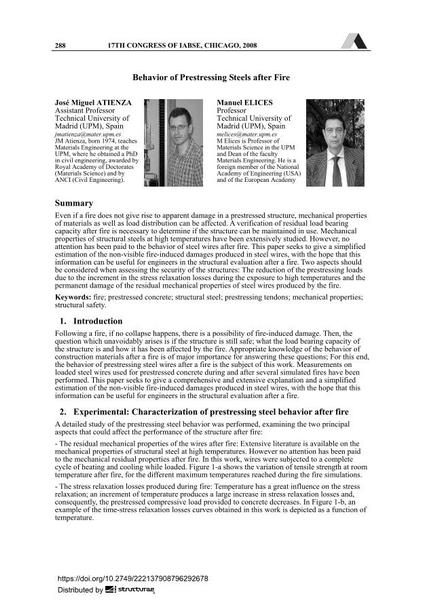Behavior of Prestressing Steels after Fire

|
|
|||||||||||
Détails bibliographiques
| Auteur(s): |
Jose Miguel Atienza
Manuel Elices Calafat |
||||
|---|---|---|---|---|---|
| Médium: | papier de conférence | ||||
| Langue(s): | anglais | ||||
| Conférence: | 17th IABSE Congress: Creating and Renewing Urban Structures – Tall Buildings, Bridges and Infrastructure, Chicago, USA, 17-19 September 2008 | ||||
| Publié dans: | IABSE Congress Chicago 2008 | ||||
|
|||||
| Page(s): | 288-289 | ||||
| Nombre total de pages (du PDF): | 8 | ||||
| Année: | 2008 | ||||
| DOI: | 10.2749/222137908796292678 | ||||
| Abstrait: |
Even if a fire does not give rise to apparent damage in a prestressed structure, mechanical properties of materials as well as load distribution can be affected. A verification of residual load bearing capacity after fire is necessary to determine if the structure can be maintained in use. Mechanical properties of structural steels at high temperatures have been extensively studied. However, no attention has been paid to the behavior of steel wires after fire. This paper seeks to give a simplified estimation of the non-visible fire-induced damages produced in steel wires, with the hope that this information can be useful for engineers in the structural evaluation after a fire. Two aspects should be considered when assessing the security of the structures: The reduction of the prestressing loads due to the increment in the stress relaxation losses during the exposure to high temperatures and the permanent damage of the residual mechanical properties of steel wires produced by the fire. |
||||
